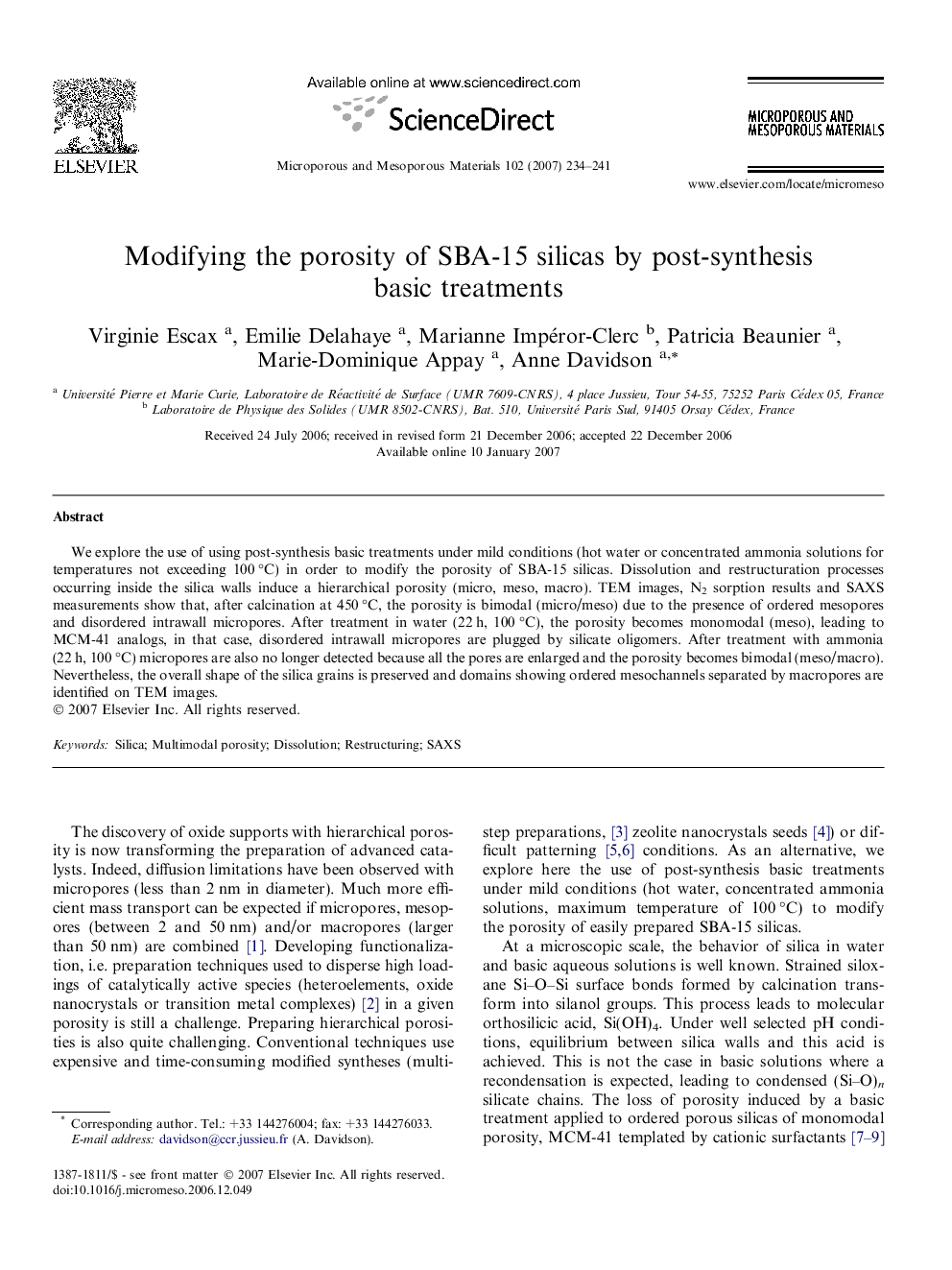| Article ID | Journal | Published Year | Pages | File Type |
|---|---|---|---|---|
| 76283 | Microporous and Mesoporous Materials | 2007 | 8 Pages |
We explore the use of using post-synthesis basic treatments under mild conditions (hot water or concentrated ammonia solutions for temperatures not exceeding 100 °C) in order to modify the porosity of SBA-15 silicas. Dissolution and restructuration processes occurring inside the silica walls induce a hierarchical porosity (micro, meso, macro). TEM images, N2 sorption results and SAXS measurements show that, after calcination at 450 °C, the porosity is bimodal (micro/meso) due to the presence of ordered mesopores and disordered intrawall micropores. After treatment in water (22 h, 100 °C), the porosity becomes monomodal (meso), leading to MCM-41 analogs, in that case, disordered intrawall micropores are plugged by silicate oligomers. After treatment with ammonia (22 h, 100 °C) micropores are also no longer detected because all the pores are enlarged and the porosity becomes bimodal (meso/macro). Nevertheless, the overall shape of the silica grains is preserved and domains showing ordered mesochannels separated by macropores are identified on TEM images.
